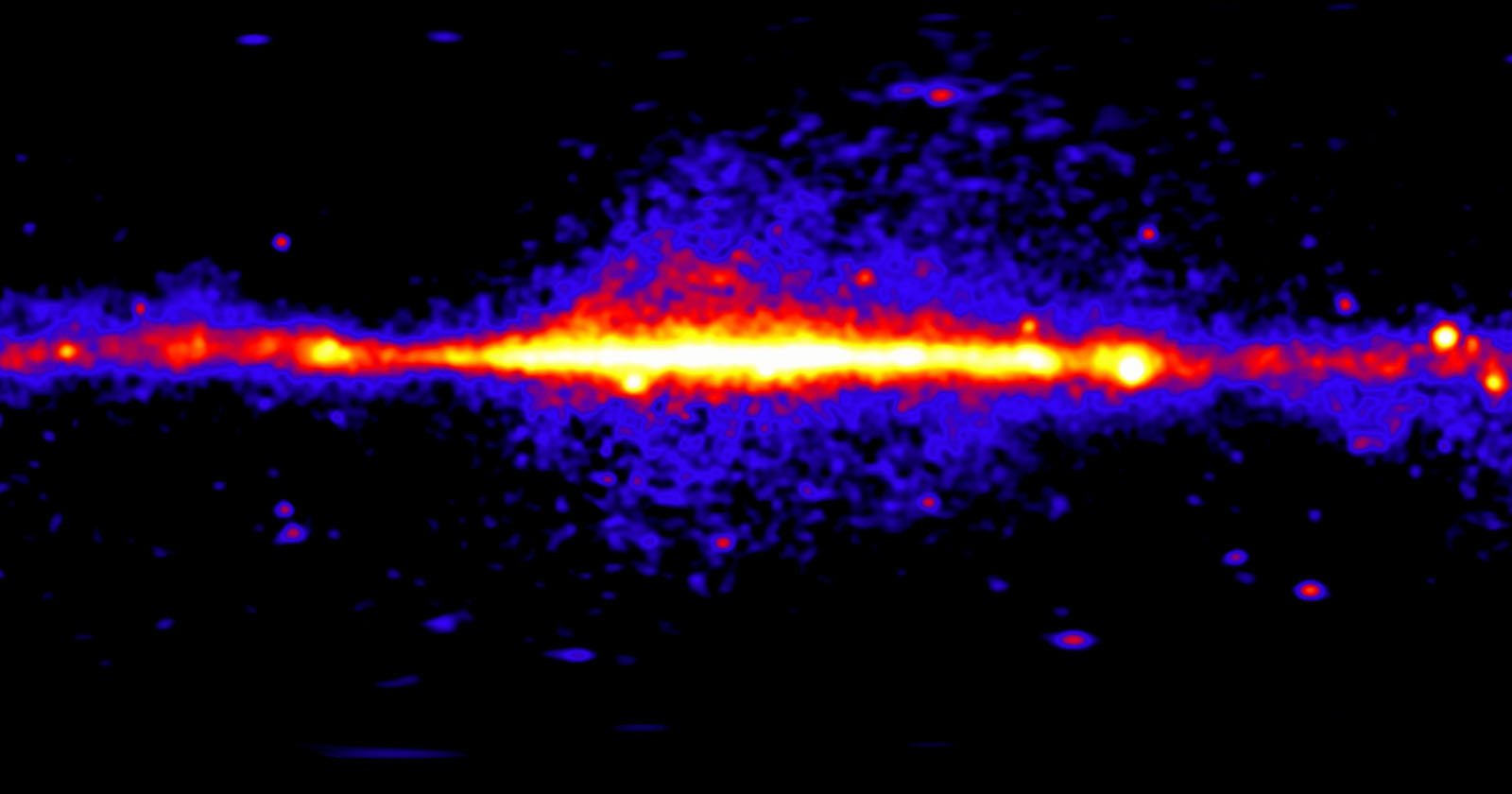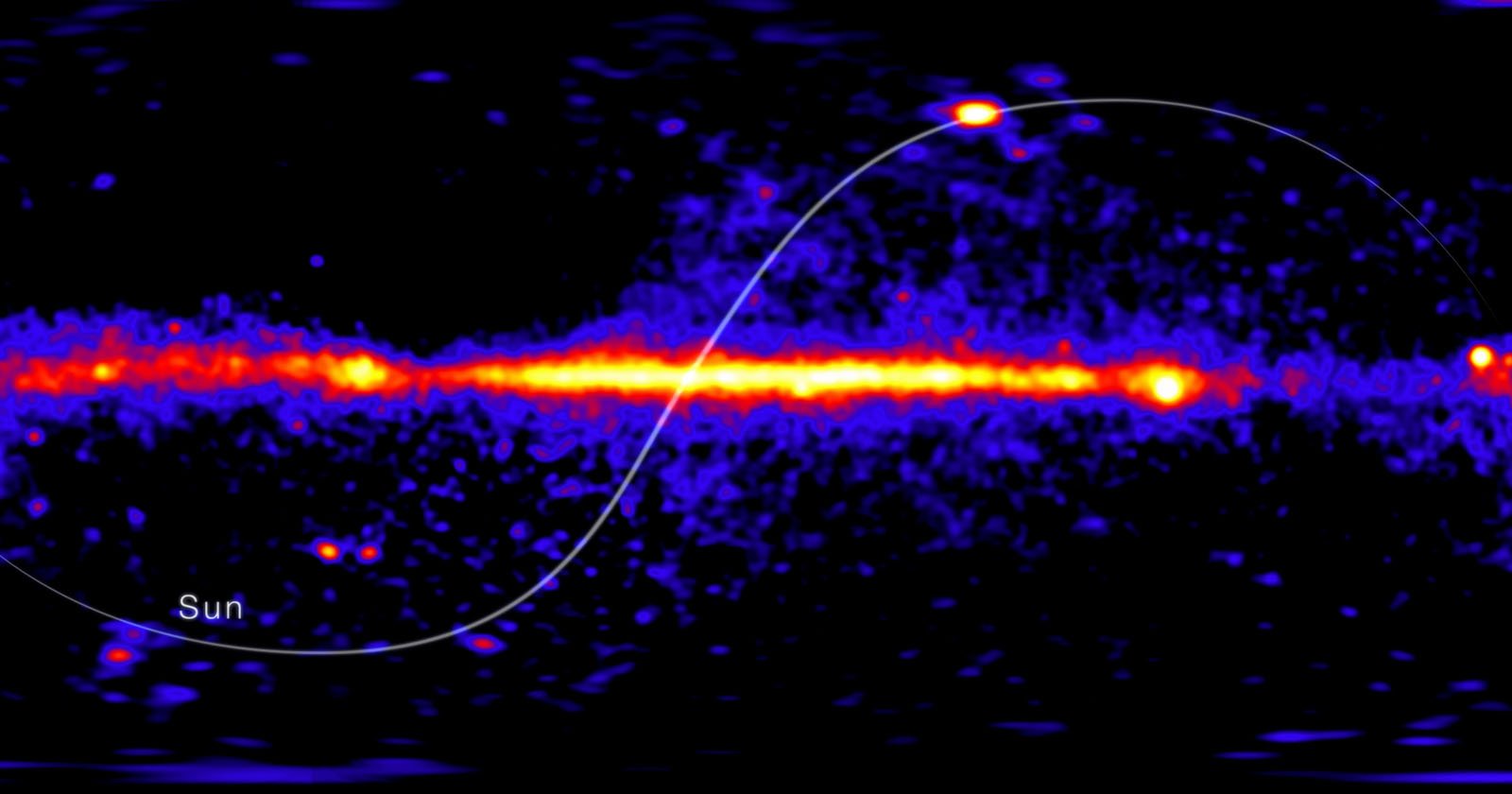NASA has created an incredible timelapse movie that condenses 14 years of data acquired by NASA’s Fermi Gamma-ray Space Telescope into six minutes of colorful cosmic rays.
No, the timelapse does not offer the jaw-dropping visuals of some of NASA’s other telescopes. After all, gamma rays are very far from visible wavelengths on the electromagnetic spectrum. However, the visuals come alive in true splendor when it becomes clear what the moving shapes represent.

“The bright, steady gamma-ray glow of the Milky Way is punctuated by intense, days-long flares of near-light-speed jets powered by supermassive black holes in the cores of distant galaxies,” explains Seth Digel, a senior staff scientist at SLAC National Accelerator Laboratory in Menlo Park, California, who created the images. “These dramatic eruptions, which can appear anywhere in the sky, occurred millions to billions of years ago, and their light is just reaching Fermi as we watch.”
Gamma rays are “the highest-energy form of light,” NASA explains. “The movie shows the intensity of gamma rays with energies above 200 million electron volts detected by Fermi’s Large Area Telescope (LAT) between August 2008 and August 2022. For comparison, visible light has energies between 2 and 3 electron volts. Brighter colors mark the locations of more intense gamma-ray sources.”
The gamma radiation source that is a constant, bright presence in the video is the Sun. The movement of the Sun in the video shows Earth’s annual orbital motion. When the Sun is at its brightest in terms of gamma radiation output, that is when it is experiencing solar flare eruptions, which are intimately connected to various events on Earth and its atmosphere, like auroras.

Many other sources of gamma radiation are shown in the timelapse, including neutron stars, supernova remnants, and black holes. Some of the light seen by Fermi has been traveling through the infinite cosmos for billions of years, finally reaching Fermi in its low-Earth orbit.
“Above and below this central band, we’re looking out of our galaxy and into the wider universe, peppered with bright, rapidly changing sources,” NASA explains. “Most of these are actually distant galaxies, and they’re better seen in a different view centered on our galaxy’s north and south poles. Each of these galaxies, called blazars, hosts a central black hole with a mass of a million or more Suns. Somehow, the black holes produce extremely fast-moving jets of matter, and with blazars we’re looking almost directly down one of these jets, a view that enhances their brightness and variability.”
While this short timelapse is impressive, Fermi’s work goes far beyond this tiny snippet. Many of Fermi’s most important discoveries are not conducive to inclusion in this video. An excellent poster offers a glimpse at some of the incredible discoveries Fermi has made.
Credits: NASA’s Goddard Space Flight Center and NASA/DOE/LAT Collaboration, Producer: Scott Wiessinger (Rothe Ares Joint Venture), Science writer: Francis Reddy (University of Maryland College Park), Visualizer: Seth Digel (SLAC National Accelerator Laboratory), Narrator: Judith Racusin (NASA/GSFC), Scientist: Judith Racusin (NASA/GSFC)
